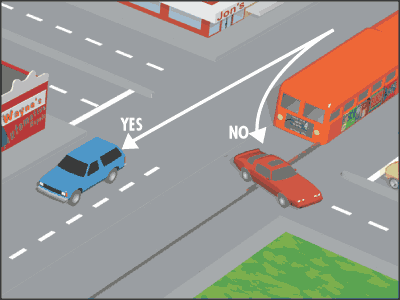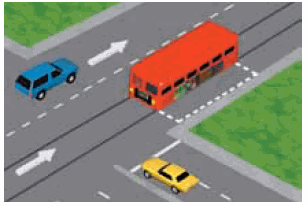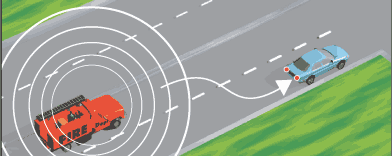This short guide will cover the basics of sharing the road with railroad and emergency vehicles.
Buses, Streetcars, and Trolleys
Do not drive through a safety zone. This is a space set aside for pedestrians and marked by raised buttons or markers on a roadway.
When people are boarding or leaving a streetcar or trolley where there is no safety zone, stop behind the vehicle’s nearest door or vehicle platform and wait until the people have reached a safe place.
When a bus, streetcar, or trolley is stopped at a safety zone or at an intersection where traffic is controlled by a police officer or traffic signal, you may pass at no more than 10 mph.
Do not overtake and pass any light rail vehicle or streetcar on the left side, whether it is moving or standing.
EXCEPTIONS:
- When you are on a one-way street.
- When the tracks are so close to the right side that you cannot pass on the right.
- When a traffic officer directs you to pass on the left.
Light Rail Vehicles
Light-rail vehicles have the same rights and responsibilities on public roadways as other vehicles. Although everyone must follow the same traffic laws, light-rail vehicles require exceptional handling ability because of their size.
Safely share the road with light-rail vehicles by:
- Being aware of where light-rail vehicles operate. Buildings, trees, etc., cause blind spots for the trolley operator.
- Never turning in front of an approaching light-rail vehicle.
Do not turn in front of light rail vehicles
- Maintaining a safe distance from the light-rail vehicle if it shares a street with vehicular traffic.
Safety Zones are marked by dotted white lines
- Looking for approaching light-rail vehicles before you turn across the tracks. Complete your turn only if a signal indicates you may proceed.
NOTE: Light-rail vehicles can interrupt traffic signals. Do not proceed until the signal light indicates you may proceed.
Emergency Vehicles
You must yield the right-of-way to any police vehicle, fire engine, ambulance, or other emergency vehicle using a siren and red lights. Drive to the right edge of the road and stop until the emergency vehicle(s) have passed. However, never stop in an intersection. If you are in an intersection when you see an emergency vehicle, continue through the intersection and then, drive to the right as soon as it is safe and stop. Emergency vehicles often use the wrong side of the street to continue on their way. They sometimes use a loud speaker to talk to drivers blocking their path.
You must obey any traffic direction, order, or signal given by a traffic or police officer, or a firefighter even if it conflicts with existing signs, signals, or laws.
It is against the law to follow within 300 feet behind any fire engine, police vehicle, ambulance, or other emergency vehicle with a siren or flashing lights (CVC §21706).
If you drive for sight-seeing purposes to the scene of a fire, collision, or other disaster, you may be arrested. Casual observers interfere with the essential services of police, firefighter, ambulance crews, or other rescue or emergency personnel.

